-
Lohff & Pfeiffer
About Lohff & Pfeiffer
Iimprint
Contact
Newsletter
Location
L&P team
- Instruments
General
Trade options
About clarinet
Search specific instrument
Ab-clarinet
Eb-clarinet
D-clarinet
C-clarinet
Bb-clarinet
A-clarinet
Mozart basset-clarinet A
G-clarinet
Bassethorn F
Alto-clarinet Eb
Bass-clarinet
Contraalto Eb-clarinet
Contrabasse Bb-clarinet
German-Albert system Bb
Reform Boehm A & Bb
Peter Bastian Instruments
Plateau clarinets
Quartertone clarinet
- L&P Optimization
Optimization
Customization
Specialities
Special Keywork
- Accessories
General
Care products
For instruments
Reeds
Tools for reeds
Straps and hand rests
- Repair
Book time
About Repair
Maintenance
Plating-Surface treatment
Pads
Padding style
Cracks
Tone hole problems
Joints
- Tips & Advice
How to..
Videos
Worldwide external information
Problems & help
Education & learning
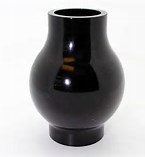
Belly barrel.About barrels
The barrel is an essential connector between the mouthpiece and the instrument. It is exchangeable allowing the player a wider range of mouthpiece and barrel options. The right barrel can improve intonation as well as the sound and playability of a clarinet.
A barrel has several parameters, which in their proper combination, can help achieve an optimal feel and sound. Common problems and how to solve them is explained later.
There are 6 important parameters:
1.The length
2.The bore
3.The bore surface
4.The shape
5.The material
6.Receiver size
7. Shape
Some other things to consider are:
1. Radiator barrels
2. Bend barrels
3. Balance barrels
4. Barrel versus tuning rings
5. Zoom barrels
6. Humidity problems
7. The original barrel
And typical problems:
1. Barrel gets stuck
2. Barrel wobbles
3. Barrel cracks
4. Loose sockets
Barrel Problems .... Read more
Barrel length
A longer barrel will lower the pitch of the instrument. This will lower the left-hand notes more than the right-hand ones.
Shorter barrels on the other hand will raise the pitch. Again, this will have a larger effect on the left-hand notes than on the right-hand ones.
Alternatively, tuning rings can also be used. Read more about this alternative below.
.
Barrel bore shape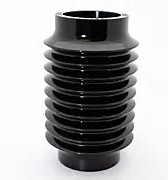
radiator barrel
The bore of the barrel is the most influential parameter and is responsible for tuning, intonation, resistance, focus and the sound. The bore of modern Boehm clarinet barrels varies between 14.7 to 15.2mm. Eb barrels are between 12.5-14.0mm.
Barrels are available in 4 different bore shapes: cylindrical (1), tapered and reversed tapered (2), straight and tapered (Moennig style or similar) (3), or rectangular (4).
1. Bb clarinet barrels are usually cylindrical.
2. A-clarinet barrels are often tapered, with the mouthpiece side having a slightly larger bore. This is done to compensate for the fact that the A and Bb clarinets are often played with the same Bb mouthpiece. Without this bore correction in the barrel the 12ths on the A-clarinet would be more out of tune.
3. Some barrels, such as Moennig barrels, start with a taper halfway down the mouthpiece before they become cylindrical. This is one way to get the 12th even better in tune.
4. A unique shape is a rectangular bore. It never became very popular and causes many kinds of hard to control issues. We don´t have much experience with them and can´t give any advice on these. Nevertheless, the sound can be different and might be interesting.
The bore of a barrel can become slightly oval over time (this is also true for all other wooden parts of the clarinet). If this happens, the bore between the barrel and the top joint will no longer align perfectly. Turning the barrel to different position can sometimes help overcome this. It´s worth trying to turn the barrel in different directions to hear if it has any influence.
Barrel inner surface
The inner surface of the bore has also an influence on the sound. Highly polished bores will result in faster response and brighter sound. It will be more focused than less polished and rougher surfaces.
Barrels with a less polished bore will have a warmer sound. Polishing an existing bore to change the sound will also widen the bore, which can cause intonation changes.
New barrels often have a very shiny inner bore. They have been polished and often waxed. The bore will become rougher over time with exposure to condensation and the creation of tiny surface cracks. The bore of the barrel will increase over time caused by swabbing. That's why we recommend drying the tenon sockets really carefully, to reduce the risk of cracks, but be easy on the bore. The humidity inside the bore will not cause any problems, since the water will not be able to penetrate the wood. But the water in the sockets can enter the wood and cause the barrel bore to swell.
Barrel materials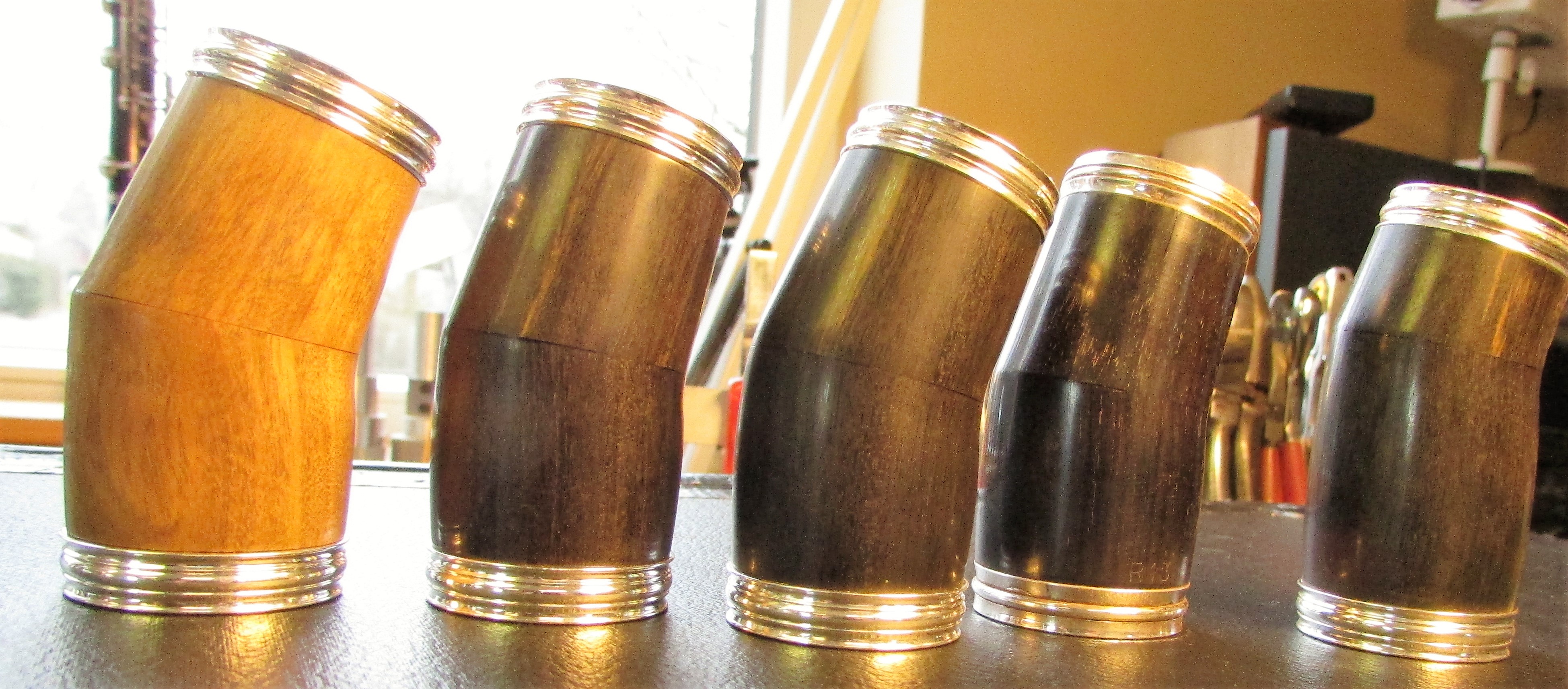
In different woods
Traditional barrels are made out of the same material as the clarinet: —African blackwood, also called grenadilla or Mpingo
Lately, a wide selection of other materials has become available such as cocobolo, tulipwood, rosewood, boxwood, plastic or eloxyded aluminum. This variety adds interesting new sound possibilities with variations in weight, density, and surface all affecting the sound. Some of them can cause unexpected problems regarding intonation and reliability.
A couple of things should be considered when a barrel is made from a different material than the instrument.
1. Woods, other than granadilla will have a different expansion rate when exposed to humidity. Problems with sticking tenons or cracks can occur.
2. Barrels with decorative wooden barrel rings made out of a different wood than the barrel face even bigger problems. Since they have different expansion ratios are cracks far more likely.
3. Synthetic materials and aluminum will be very stable and may avoid these problems. They react only to temperature changes and are immune to humidity changes. This may affect the resonance and overall timbre. It is a matter of personal preference what to prefer.
Barrel receiver size
For most Boehm clarinets the mouthpiece receiver size is identical. The barrel will need to correspond to the mouthpiece tenon, some of which are cylindrical and others tapered. The latter have the disadvantage of wobbling when pulled out to adjust intonation.
Gaps in the bore and wobble should be avoided. If a barrel receiver is longer than the instrument or mouthpiece tenon, tuning rings should be inserted to fill the gap. If it is not possible to measure them with a caliper, put the mouthpiece and the barrel together. If a gap is visible when looking into the bore, a tuning ring is needed. The same can be done with the barrel and the instrument.
We can modify receivers and tenons to allow the use of various combinations of mouthpieces, barrels and instruments. >
Barrel shape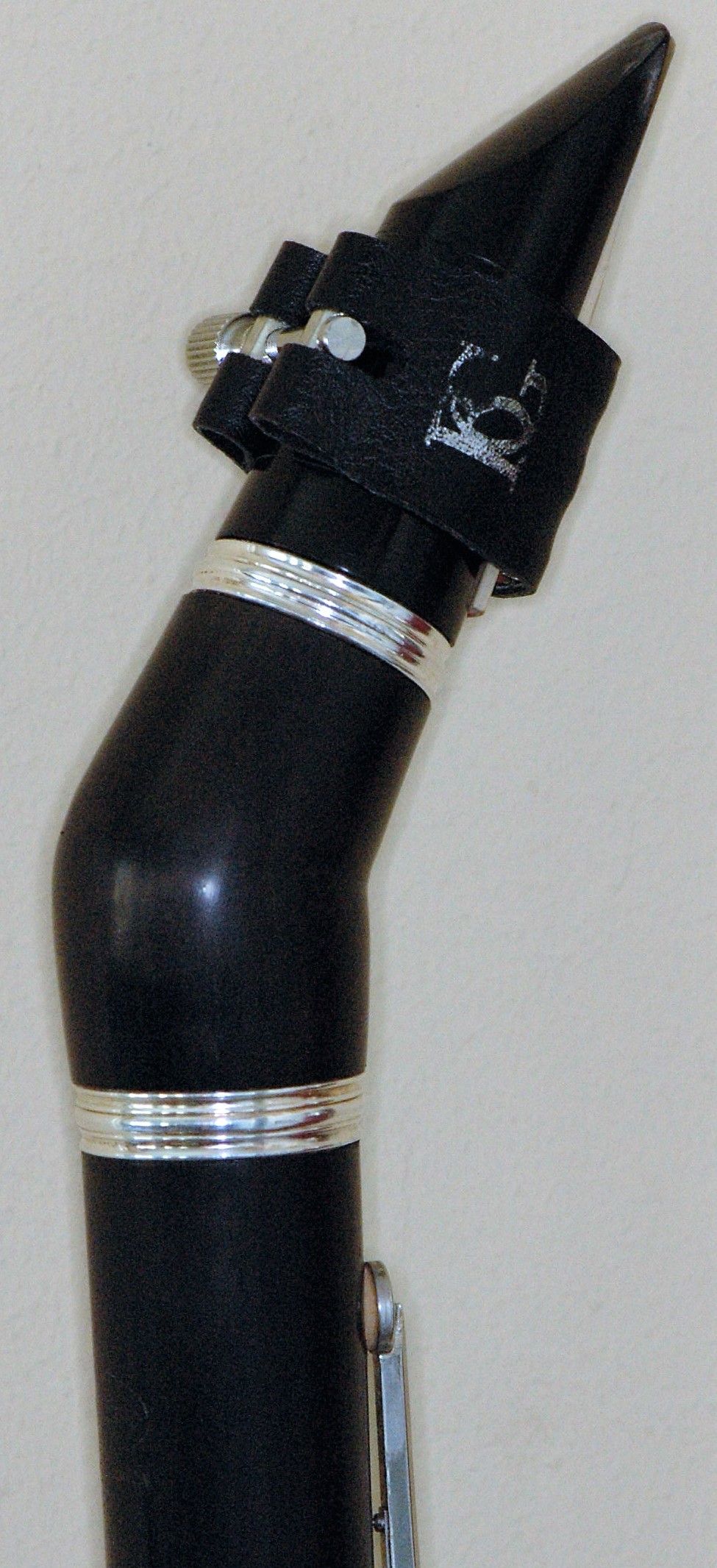
Barrels are available in different shapes and diameters. The influence of the diameter is much bigger than the shape, which his almost negligible. A larger diameter will increase the mass of the barrel, which has a significant influence on the sound impression, primarily for the player. He hears and feels the sound through his inner ear. The players teeth are directly connected with the mouthpiece and transmit the physical vibrations of the instrument through the players skull to the inner ear. That's the reason why players hear themselves different than his/her audience. You will notice that:
Thinner barrels have less mass, allowing them to react faster. This often feels less powerful.
Thicker barrels increase the mass and thus react slower. The vibrations feel stronger and it gives the impression of more volume and smoothness.
The DEC barrel has "radiator ribs", possesses a unique shape designed to increase the outer surface area of the barrel in order to allow it to project more sound into the air.
Bent barrels
Bent barrels are designed to help release tension in the lower arms by allowing the clarinet to be held parallel to the body, like an alto clarinet, with a very relaxed arm position. Most of the weight of the instrument can now be held with a neck strap or preferable with a shoulder harness.
The LP Balance barrel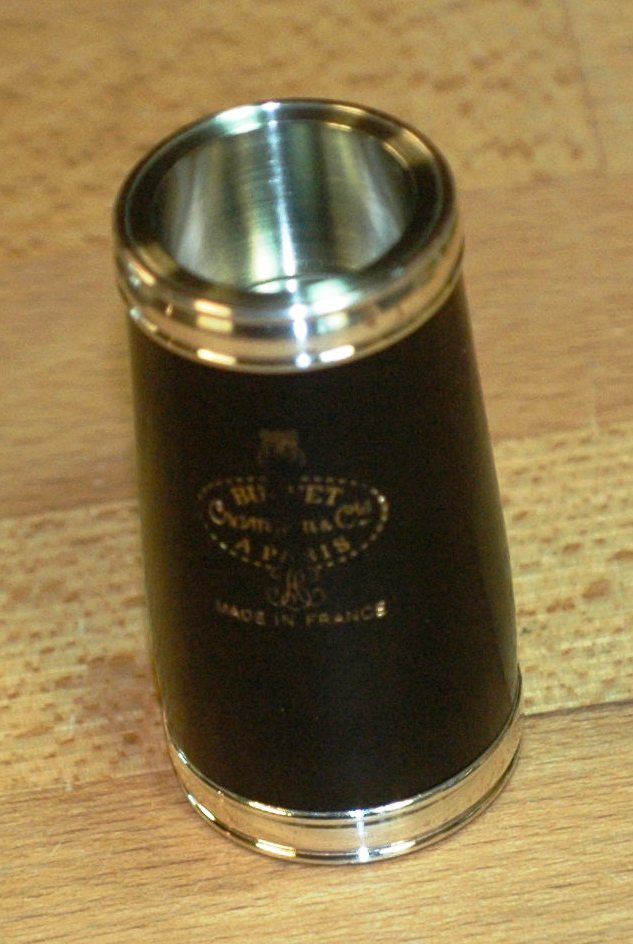
LP Balance barrels available for all brands
The LP Balanced Barrel is our new and unique creation, designed to achieve two goals.
2 metal receivers add extra weight to the barrel. This moves the point of balance of the instrument higher up and helps when the thumb rest is moved 12-15mm higher to a more ergonomic position by equalizing the weight between the thumb and the bell.
Due to its weight the response is improved and the altissimo register in particular becomes more focused.
Barrel Problems
.... Read more
Help us to get better
Was this article helpful?
Comments, additions or questions are always welcome at: info@clarinet.dk(C)2011 - by Lohff & Pfeiffer USA-6220 Rhode Island Ave-Riverdale Park MD 20737 - USA - Phone: (812) 929 5556 & 415 470 6879 - info@clarinet.dk - Instruments






